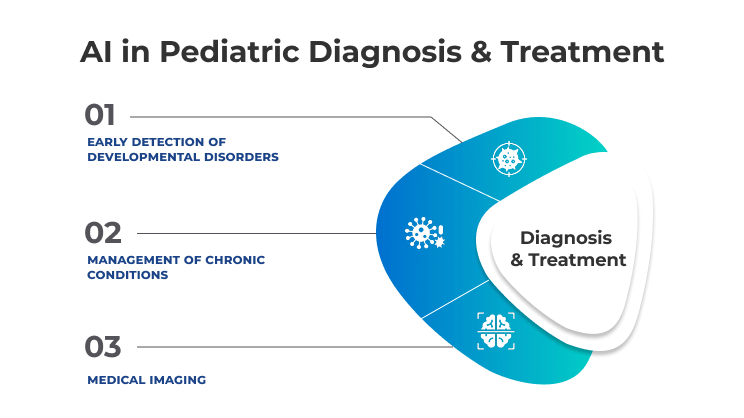Using AI tools in healthcare is not just about buying software and seeing quick results. Healthcare systems in the U.S. have many different and separate technologies. Electronic health records (EHRs), billing systems, claims processing platforms, diagnostic tools, and communication channels all need to work together. This helps keep patient care and daily tasks running smoothly.
Jonathan Crowther from Pfizer said one big challenge is making “secure innovation spaces” in healthcare places. These spaces allow AI to be created and tested while keeping patient data safe. Without strong integration behind the scenes, new AI tools can’t fit well into current workflows, so they aren’t very useful.
Parminder Bhatia, Chief AI Officer at GE Healthcare, mentioned that AI systems which use many types of data like medical images, patient history, and lab results work better for decisions. But these systems often must fit into workflows not made for AI. This means IT staff, clinicians, and AI builders must plan carefully and work closely together.
Nikolay Burlutskiy from AstraZeneca said that data security must come with AI integration when handling medical images and other clinical information. Health groups face rules like HIPAA, making it hard to share and analyze data quickly.
One example in U.S. medical offices is how AI joins with older systems for admin jobs like booking appointments, insurance claims, and patient checks. When new AI and old software don’t match, it can cause delays, mistakes, and frustration for both staff and patients.
Privacy Concerns and Regulatory Compliance
Keeping patient data safe is very important in the U.S., where laws strictly control health information use and sharing. AI needs lots of data to find patterns and help doctors, but following privacy laws is a big challenge.
Rachel Harrison-Smith from Bupa said that solving these rules needs smart privacy methods. One way is using synthetic data, which is fake data made to look like real patient info without revealing anything private. This lets AI models be tested without risking real patient privacy.
Dr. Naween Kumar and others suggest federated learning. This lets AI learn using data from many sources without putting all the patient info in one place. This lowers the chance of data leaks.
Still, many health groups are careful. Data leaks or misuse can bring legal trouble and lose patient trust. Because of this, many U.S. medical offices slow down adopting AI, so improvements take longer to become common.
Challenges in Achieving Real-World Effectiveness
AI often works well in labs but struggles in everyday healthcare settings. The Zühlke Group said many AI tools succeed in tests but fail when used widely in real clinics. This happens because patient groups differ, data changes, and operations have limits.
Michael Crosnick, who works with hospitals and tech companies, says AI systems must be checked and improved regularly after being put into use. Real-world checks keep AI tools safe and useful as new patient data or treatments come up.
Sam Tyner-Monroe from DLA Piper stresses strict rules and risk checks, sometimes called “red teaming,” to find mistakes or bias in AI before and after use. This helps keep trust and ethics in patient care.
AI and Workflow Automation in Healthcare Administration
AI helps front-office work in healthcare by lowering paperwork and making work easier. Medical office managers and IT staff often have lots to do with phone calls, appointments, claims, and patient messages. AI can help handle this work and improve service.
Some companies, like Simbo AI, make systems that automate phone tasks and answering services. This helps offices answer many patient calls without more staff. Patients can get information, make appointments, or reach the right provider faster.
AI can also help with routine tasks like notes, patient reminders, and questions. This lets staff spend more time with patients instead of paperwork. Innovation Incubator Inc says AI can even predict when to schedule staff and appointments better, making work smoother.
Better AI systems speed up insurance claims processing. Lorenzo Gholston said generative AI might help with managing claims for payers by lowering mistakes and speeding up payments, which is important for keeping practice finances stable.
AI can also make patient communication more personal. Automated systems change answers based on patient history and preferences. For example, AI chatbots can remind patients to take medicine and give them education, helping them manage their health better, as MedAdvisor Solutions expects.
Operational Efficiency and AI: What Medical Practices in the U.S. Should Know
Medical offices try to reduce costs while keeping or improving care quality. AI helps lower work in many ways:
- Automated Medical Documentation: Doctors spend a lot of time writing notes. AI that types and summarizes notes can cut this time, letting doctors see more patients and feel less tired.
- Optimizing Patient Scheduling: AI looks at old appointment data and no-show rates to make schedules better and reduce empty slots.
- Claims Processing Automation: AI finds errors in claims, speeds approvals, and lowers denials, improving money flow and patient experience.
- Real-Time Monitoring and Alerts: AI watches patient data live and alerts staff about urgent issues. This helps improve health results and lowers stress on healthcare workers, as Ali Haquani noted.
For U.S. healthcare administrators, it is important that AI systems follow HIPAA and local laws and support standards like HL7 and FHIR for easy data sharing between systems.
The Role of Collaboration in AI Adoption and Overcoming Challenges
Experts like Robert Chilvers from Newcross Healthcare and Parminder Bhatia agree that teamwork is very important. Bringing together doctors, IT staff, AI researchers, data experts, and compliance officers helps AI work better.
This teamwork makes sure AI tools fit healthcare work and are easy for staff to use. Careful AI use with human checks and ethical rules helps avoid mistakes and keeps patients safe.
Watching AI after it starts being used also helps it adapt to changes and keep working well. Health-Vision.AI supports this steady, patient-focused AI use instead of rushing or causing big changes.
Addressing Data Management and Security Using Distributed Technologies
New ways of computing also support AI in healthcare. Cloud computing, fog computing, and edge computing help handle health data safely and quickly.
The book Integrating Cloud, Fog, and Edge Computing in Healthcare (Springer, 2025) explains how these systems process data live and keep sharing secure while handling privacy issues. Using blockchain with federated learning helps keep data correct and follow rules.
For IT managers in U.S. healthcare, using these computing methods helps grow systems, lowers delay in data use, and protects sensitive patient data while it is processed and shared.
Final Thoughts for Medical Practice Administrators and IT Managers
Today, medical office managers and IT leaders in the U.S. need to plan carefully when bringing in AI. They should:
- Understand that adding AI means lots of work to connect AI tools with current EHR and admin systems.
- Focus on data privacy and following laws using tools like federated learning and synthetic data.
- Value ongoing real-world testing and risk checks to keep AI working well and safely over time.
- Use AI automation to lower admin work, especially in front-office tasks like calls, appointments, and claims.
- Encourage teamwork between care and tech staff to build AI tools that fit healthcare tasks.
- Use advanced computing tech to handle clinical and admin data safely and efficiently.
By knowing these challenges clearly, healthcare groups can make smart choices on using AI to improve day-to-day work and patient care.
This careful approach helps U.S. medical offices handle AI in healthcare, focusing on responsible use that fits current care standards and goals.
Frequently Asked Questions
What are the key areas where generative AI is expected to reshape healthcare by 2025?
Generative AI is expected to reshape healthcare by streamlining administrative processes, enhancing clinical decision-making, personalizing patient care, automating claims processing for payers, and providing insights to improve patient outcomes.
How can AI improve patient engagement and communication?
AI can enhance patient interactions by personalizing engagement, streamlining communication, and ensuring that healthcare information is accurate and easily accessible, improving overall patient experiences.
What role does AI play in operational efficiency within healthcare?
AI can automate documentation, optimize resource usage, and reduce administrative burdens, allowing healthcare providers to focus more on direct patient care and improve service delivery.
How will AI contribute to personalized medicine?
AI analyzes vast amounts of patient data to tailor treatments to individual health profiles, enhancing treatment effectiveness and patient satisfaction by offering more precise care.
What challenges exist in implementing AI in healthcare?
Challenges include the gap between the promise of AI and real-world outcomes, scalability issues, integration with existing systems, and the need for data privacy and security.
How can AI assist in diagnostics and decision-making?
AI algorithms can analyze medical images and data rapidly, providing accurate diagnoses and supporting clinical decisions, thus reducing the likelihood of human error.
What impact does predictive analytics have on patient care?
Predictive analytics helps forecast patient responses by using historical and real-time data, enhancing preventative care and improving overall health outcomes.
How is AI expected to transform medication management by 2025?
AI will guide patients in managing medications, providing education and support to make informed decisions, and increasing trust in medication information.
What advantages does AI bring to operational strategies in healthcare?
AI improves operational strategies by boosting efficiency, enabling real-time monitoring, and enhancing resource allocation, which ultimately leads to better patient outcomes.
What innovations in patient interaction are expected from AI advancements?
Innovations include non-diagnostic patient interactions that improve administrative efficiency and enhance communication, creating a more user-friendly healthcare experience.
The post Navigating Challenges in AI Implementation in Healthcare: Addressing Integration, Privacy, and Real-World Effectiveness first appeared on Simbo AI – Blogs.







